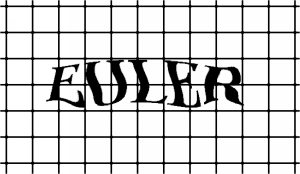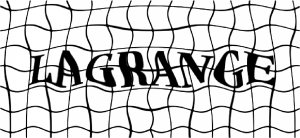| Franz J. Vesely > CompPhys Tutorial > Selected Applications > Hydrodynamics |
8 Hydrodynamics
How do you describe a flow? Some basic truths: General equation of motion for the flow field $\vec{v}(\vec{r},t)$ in a compressible viscous fluid: Navier-Stokes equation
$
\frac{\textstyle \partial }{\textstyle \partial t} \rho \vec{v} + \nabla \cdot
\left[ \rho \vec{v} \vec{v} \right] + \nabla p
- \mu \nabla \cdot {U} = 0
$
(8.1)
Here, $\mu$ is the viscosity, and
$
{U}\equiv\nabla \vec{v} + (\nabla \vec{v})^{\textstyle T}
-\frac{\textstyle 2}{\textstyle 3}(\nabla \cdot \vec{v}) {I}
$
(8.2)
defines the Navier-Stokes tensor. (In 2 dimensions, write $1$ in place of $2/3$). Character of Navier-Stokes PDE:
The NS equation results from the conservation of momentum. In addition, we have conservation of mass,
$
\frac{\textstyle \partial \rho}{\textstyle \partial t}+ \nabla \cdot \rho \vec{v}=0
$
(8.3)
and conservation of energy,
$
\frac{\textstyle \partial e}{\textstyle \partial t}
+ \nabla \cdot \left[ (e+p) \vec{v} \right]=0
\;\;\;\;
\;\;\;\;
{\rm with}\;\;\;\;
e \equiv \rho \epsilon + \frac{\textstyle \rho v^{2}}{\textstyle 2}
\;\;\;\;
$
(8.4)
where $e$ is the energy density ($\epsilon$ ... internal energy per unit mass of the fluid). To close the set of equations some equation of state $p=p(\rho,\epsilon)$ is assumed. The following approaches will be discussed:
Subsections
vesely 2006
|

